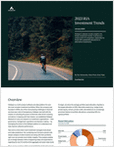Why did Fidelity strike a deal with Betterment to make the newly minted Betterment Institutional an option on Fidelity’s RIA platform?
“We see this as a practice management engagement,” said Mike Durbin, president of Fidelity Institutional Wealth Services (IWS), in an interview Thursday. Durbin was speaking during the second day of Fidelity IWS’s “Be Greater” conference in New York — the last stop in an eight-city tour that included the release of a book by the same name that provides lessons on greatness from 15 different RIA firms (see Fidelity’s release on the book for the names of the RIA firms profiled in the book and to download it in PDF, epub and Kindle formats).
Noting that advisors can “get a lot of leverage from using technology,” and that “this is a great time to be in the business,” despite the fact that most advisors also have a “common anxiety about the future,” the technology in Betterment Institutional, he says, keeps the advisor “front and center” in the relationship with the client. That’s because end clients who use the Betterment Institutional platform will be interacting with the RIA, not with Betterment directly, since it will be white labeled with the advisory firm’s name. Moreover, Durbin said most advisors who have tested the Betterment Institutional offering (announced Oct. 15 by Fidelity, followed swiftly this week by competitor Schwab’s robo-advisor offering) “see this as an opportunity for new client segmentation.”
The rise of digital advice platforms like Betterment also reflect a change in the investing universe and a challenge to the advisory profession. “The industry used to have a knowledge advantage” when it came to investing, but now the “profession has to be careful” not to rest on its laurels, Durbin said. Moreover, “if you’re not digital, how are you going to manage the relationship” with clients, he asked.








 October 31, 2014 at 10:42 AM
October 31, 2014 at 10:42 AM










